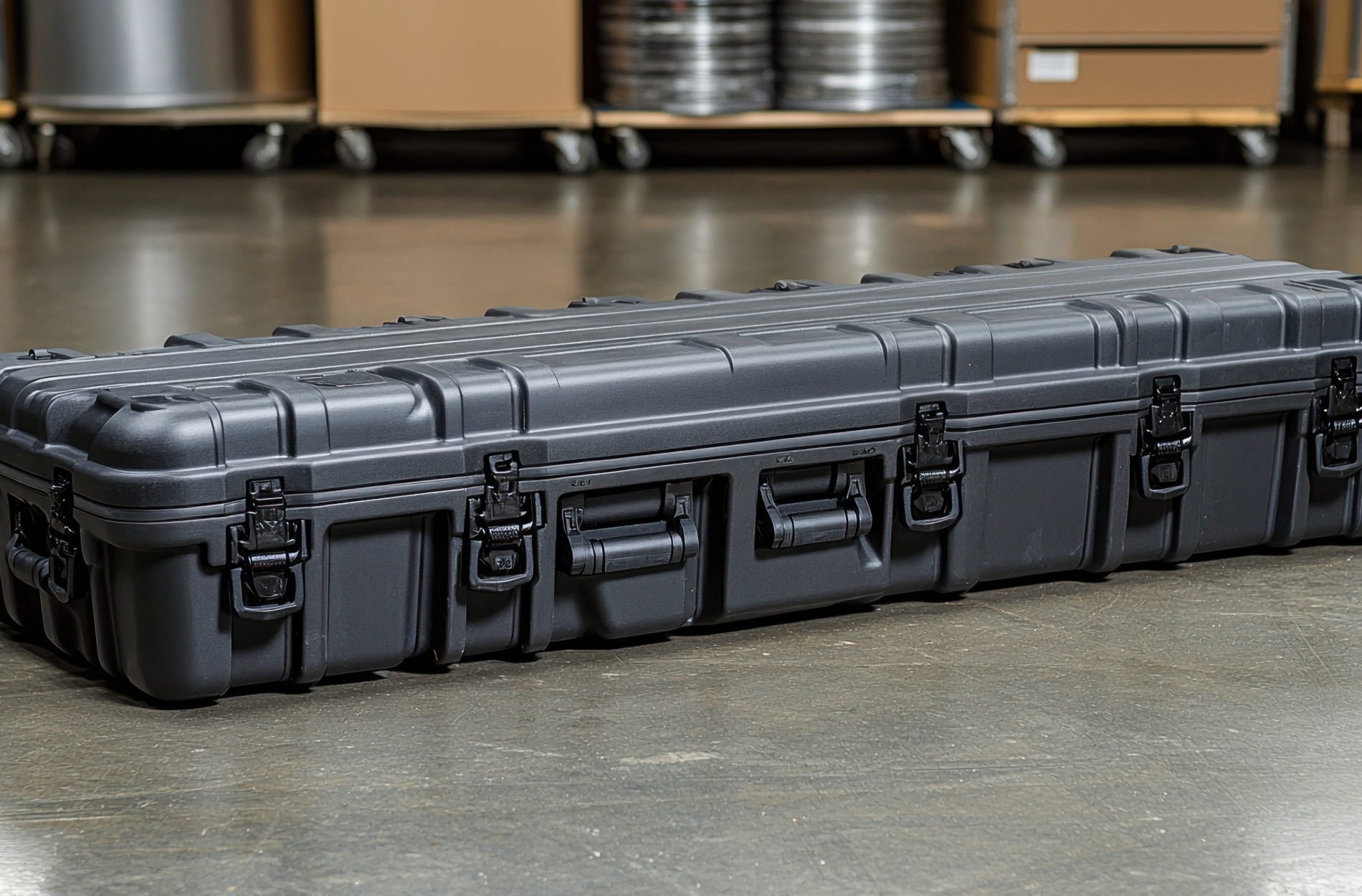Military-grade cases are built to handle harsh environments, heavy loads, and frequent movement, but that doesn’t mean they can be ignored once they’re in use. Even the toughest cases can wear down over time. Scratches, dents, weakened seals, or hidden damage can lead to serious equipment issues if left unchecked. These types of cases are often responsible for protecting fragile or costly materials, which makes regular inspections a smart habit.
How often should military-grade cases be inspected? That depends on how they’re used and where they’re stored. For high-traffic or high-risk environments, routine inspections are usually done monthly or even weekly. In other cases, every few months might be enough. Either way, sticking to a schedule helps catch damage early, before it turns into a bigger issue.
Why Regular Inspections Matter
Military-grade cases are designed to stand up to impact, vibration, and weather exposure, but none of that makes them immune to wear. Regular inspections help spot early signs of damage that could affect how the case performs. A small crack or a faulty latch might seem minor at the time, but those types of problems tend to grow if ignored.
The goal isn’t just to keep the case looking good. It’s about making sure it still works. If a seal starts to fail, water can get inside. Worn-out wheels make the case harder to move. If the interior foam wears down, fragile equipment might not stay in place during transport. Those are the kinds of issues that cost time and money to fix later.
Here are some common risks of skipping inspections:
– Water damage from broken seals or cracked shells
– Reduced shock protection from worn or flattened foam
– Loose, rusted, or missing hardware
– Dirt or debris buildup that leads to material breakdown
– Missing or unreadable labeling and tracking details
For teams that rely on military-grade cases to carry sensitive electronics, tools, or gear for field use, even a small issue can cause delays or losses. Spotting these things early helps avoid bigger setbacks down the road.
Recommended Inspection Schedule
There’s no one-size-fits-all timeline for inspections, but starting with how often a case is used and the environment it operates in can help shape a solid plan. Cases that get moved a lot or go into harsh weather will need extra attention. Others that sit in controlled storage might not need as frequent checks.
Here’s a general rule of thumb based on typical usage:
1. Heavy Use (daily transport, rough handling, poor weather exposure): Inspect weekly
2. Moderate Use (frequent but careful handling, indoor storage): Inspect monthly
3. Light or Occasional Use (minimal movement, clean storage): Inspect at least every three months
Revisit your inspection timelines once or twice a year, especially if how you use the cases changes. For example, a team switching to more outdoor work or increasing shipping volume might need to shorten the inspection cycles. It’s also important to make sure everyone doing the inspections knows what to look for and keeps records. Well-kept logs help track patterns and point out problems before they grow.
Key Areas to Inspect in Military-Grade Cases
A proper inspection means going deeper than just giving the case a quick glance. Military-grade cases have multiple moving and fixed parts, and each can wear out differently depending on use. Here’s a breakdown of the areas that need to be checked:
1. Latches and Closures – These keep the case sealed, so it’s important to check for looseness, misalignment, cracks, or broken components. A latch might feel like it’s working just fine but could fail under stress.
2. Seals and Gaskets – These stop moisture and dirt from getting in. Look for material that’s drying out, cracking, or falling apart. If the gasket is damaged, the case has already lost part of its ability to protect.
3. Hardware and Hinges – Handles, hinges, and screws should move smoothly. Check for rust, gaps, or squeaky movements. A case with weak hardware is harder and riskier to carry.
4. Outer Shell – Even a small dent or crack in the shell can affect durability. Check for signs of pressure damage, warping, or materials starting to separate.
5. Foam or Interior Padding – Foam should be thick, firm, and hold its shape. Press gently across surfaces to check if any areas have collapsed or are no longer providing cushion.
6. Wheels, Handles, and Skids – These parts are under constant pressure. Look for signs of wobble, sticking, or uneven rolling. Handles should be strong and easy to grip.
7. Labels and Tracking Info – Barcodes, tags, or ID labels need to be clear and easy to read. Replace anything that’s faded or missing. This can help avoid confusion during logistics.
Using a checklist helps keep the inspections consistent across your team, especially when multiple people are in charge of gear or when cases are shared across different crews.
Why a Pallet Crate Box Helps Extend Case Life
Military-grade cases can take a beating on their own, but protecting the protector makes a big difference. Adding a pallet crate box into your storage and shipping process can reduce how much strain cases go through. Think of it as armor for your case during transport and downtime.
In places like Rochester, where seasons change and temperature swings are common, gear might be sitting for weeks at a time under changing conditions. A pallet crate box gives added shielding from moisture, dust, and sudden bumps.
Here are some advantages:
– Extra Shock Protection – A pallet crate box softens vibration during shipment, which means the military-grade case inside gets less wear.
– Better Stackability – These boxes are sized for easy stacking without throwing off balance. That keeps everything upright and lowers the chances of cases tipping or falling.
– Safer Handling – Moving a built crate with a pallet jack or forklift is a lot easier than trying to move individual cases, especially when there’s more than one.
– Cleaner Storage Environments – Sealed crates mean your cases pick up less grit, moisture, or exposure. That helps keep your seals, foam, wheels, and labels in better shape.
That added protection adds years to the useful life of your gear and gives you better odds that what’s inside gets to its destination without issue.
Building Long-Term Reliability with Consistent Care
Staying on top of inspection routines helps avoid last-minute problems. Most gear doesn’t break in one day. It slips bit by bit when no one’s looking. A weak hinge here, crushed foam layer there. The earlier you catch it, the cheaper and easier it is to fix.
When inspections are regular and built into your team’s rhythm, it becomes part of how you handle gear. It also avoids holding up shipments or field use because something went wrong too late in the process.
Pairing those inspections with added care—like using a pallet crate box—brings peace of mind. It helps control long-term wear, cuts down repair needs, and keeps both the case and cargo in better shape. Whether you’re protecting sensitive electronics for lab work or gear for field teams, this added attention pays off with fewer headaches and longer-lasting performance.
To make sure your equipment is fully protected and lasts longer, consider the additional benefits of using a pallet crate box. This sturdy option enhances safety during transport and provides greater organization during storage. Explore more with Orcon Industries to see how our solutions can meet your specific needs.




